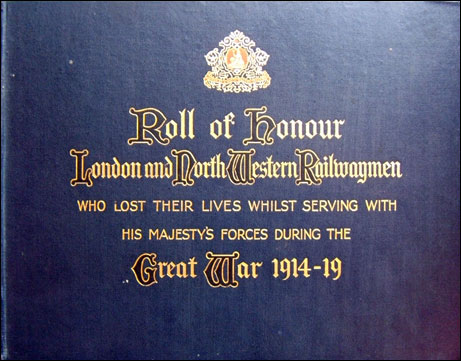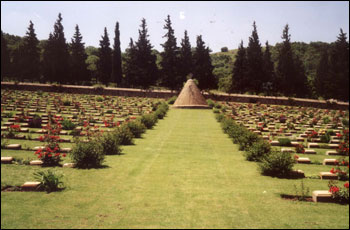|
|
Details taken from www.cwgc.org
Commonwealth War Graves Commission Casuality Details Name: Smith, Eustace Initals: E Nationality: United Kingdom Rank: Private Regiment: 7th Battalion, Wiltshire Regiment. Formerly 14146, Oxfordshire and Buckinghamshire Light Infantry. Unit Text: "C" Company Age: 29 Date of Death: 24/04/1917. Killed in action. No known grave. Service No: 13873 Casualty Type: Commonwealth War Dead Commemorated: DOIRAN MEMORIAL, Greece. Additional information: Born Stowe, Northamptonshire, enlisted Wolverton, resident Watford, Hertfordshire. Son of Job Smith, of Castlethorpe, Stony Stratford, Bucks; husband of Florence Annie Smith, of 59, Shakespeare St., Watford, Herts. Memorial: Doiran Memorial The Doiran Memorial stands near Doiran Military Cemetery, which is situated in the north of Greece close to the Yugoslav frontier and near the south-east shore of Lake Doiran. It is approximately 2 kilometres behind the village of Doiran and is reached via a farm track after turning left in the village by a large taverna. The Memorial stands on what was called Colonial Hill, and can be seen from a distance and is a landmark. Historical Information: The DOIRAN MEMORIAL stands roughly in the centre of the line occupied for two years by the Allies in Macedonia, but close to the west end of the part of this line held by Commonwealth forces. It marks the scene of the fierce fighting in 1917-1918, in which the majority of Commonwealth casualties on the field occurred. From October 1915 to the end of November 1918, the British Salonika Force suffered some 2,800 deaths in action, 1,400 from wounds and 4,200 from sickness. The campaign afforded few successes for the Allies, and none of any importance until the last two months. The action of the Commonwealth force was hampered throughout by widespread and unavoidable sickness and by continual diplomatic and personal differences with neutrals or Allies. On one front there was a wide malarial river valley and on the other, difficult mountain ranges, and many of the roads and railways it required had to be specially constructed. The memorial serves the dual purpose of Battle Memorial of the British Salonika Force (for which a large sum of money was subscribed by the officers and men of that force), and place of commemoration for more than 2,000 Commonwealth servicemen who died in Macedonia and whose graves are not known. The memorial was designed by Sir Robert Lorimer with sculpture by Walter Gilbert. The memorial stands near DOIRAN MILITARY CEMETERY. The cemetery (originally known as Colonial Hill Cemetery No.2) was formed at the end of 1916 as a cemetery for the Doiran front. The graves are almost entirely those of officers and men of the 22nd and 26th Divisions and largely reflect the fighting of April and May 1917 (the attacks on the Petit-Couronne), and 18-19 September 1918 (the attacks on Pip Ridge and the Grand-Couronne). In October and November 1918, after the final advance, a few burials took place from the 25th Casualty Clearing Station. After the Armistice, graves were brought into the cemetery from the battlefields and from by some small burial grounds, the most important of which was Strumnitza British Military Cemetery, north-west of Doiran, made by the 40th Casualty Clearing Station in October and November 1918. The cemetery now contains 1,338 Commonwealth burials of the First World War, 449 of them unidentified. There are also one French and 45 Greek war graves. |
||||||||
 |
||||||||
|
